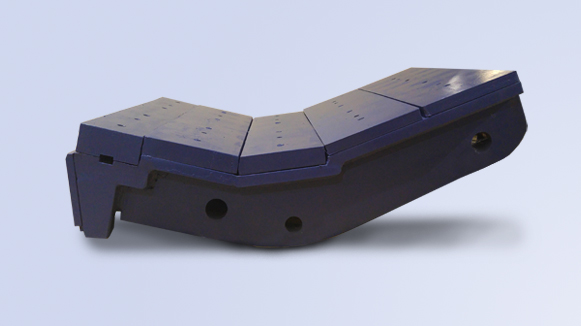Selecting The Right Crusher
Kategori: Allmänt

Selecting the correct crusher is important for every process. Understanding the different stages of crushing and the types of crushers that work best for each stage will make it easier to choose the appropriate equipment. Each type of crusher serves a different purpose and is used for achieving a specific end result.
Like the previous stage Each crushing stage will be expected to produce an exact output for the next phase. Aggregate producers that match the proper crusher liners stage with the correct stage will be the most efficient and profitable.
Crushing stages
The majority of aggregate producers are acquainted with the selection of crushing equipment and are aware that it's possible to pick a piece of equipment based only on specifications sheets and calculators of gradation. However, it is important to weigh theoretical conclusions against actual experience with the material, as well as the maintenance, economic and operational aspects of the various options.
Material reduction typically happens in stages. There are some single-crusher systems, but the most common systems have at minimum three or two crushing stages.
Primary crushing. Primary crushing is the process of making it possible to transport materials via a conveyor belt. In most aggregate crushing plants, primary crushing takes place in a jaw crusher, but a gyratory primary crushing machine could be utilized. A crusher with an impact is an ideal choice if the material is easy to crush, and is not too hard.
The most significant features of a primary crusher are the capacity and capacity to take in raw materials with no blockages. A larger primary crusher is more costly to buy than a smaller machine. Because of this, the cost of investment calculations for primary crushers must be weighed against the costs of blasting raw material to a smaller size.
In most cases trucks move raw materials to a fixed primary. You should also consider the costs of maintenance, fuel, and tires in addition to the return on investment.
If the quarry's face is crushed, a pit-portable primary crushing plant can prove to be a cost-effective option. Modern machines typically have an incline primary crusher that moves with the quarry face.
Intermediate (secondary crushing). The primary purpose of intermediate crushing is to make different smaller, coarser pieces or prepare the material for crushing in the final stage. The quality of the product is crucial in the event that the intermediate crusher is going to be used to make railway ballast.
In other situations, there are generally no quality standards, however the product must be suitable for fine crushing. The main aim is to get the highest reduction possible at the lowest cost.
Fine crushing (tertiary). In this crushing stage the quality and quantity of fine-quality products are decided. The quality requirements may be strict for final products, especially within the aggregate industry.
In most cases fine crushing and cubing are combined into one crushing stage. The choice of the appropriate crusher for tertiary crushing calls for both practical experience and theoretical know-how. In order to ensure the proper design of the system, producers should consult an experienced specialist in application.
Types
Jaw crushers
A jaw crusher is a type of compression crusher. The material can be reduced by pressing it between two pieces steel. The size of the discharge is determined through the setting or space between the two steel pieces. The setting is tighter, which leads to less output and lower throughput capacity.
As a compression crusher jaw crushers generally produce the most coarse material since they break rock through the natural inherent lines of weakness. Jaw crushers are an excellent primary crusher, when used to prepare the rock for the subsequent processing stages.
Cone crushers and gyratory crushers
These machines also crush steel between two steel pieces. The position between the two pieces determines the output.
While the chamber is circular in its shape, the rotating piece of steel is not meant to rotate. Instead the wedge is pushed around in order to cause compression on the one side, and a discharge openings on the other side. Cone crushers can be utilized as secondary or tertiary crushers however, they must be equipped with a low proportion of fines.
Impact crushers
Impact crushers utilize mass and velocity to decrease the feed material. First, the material feed is reduced when it enters the crusher liners with the moving blow bars or hammers within the rotor. Second, the break occurs after the material is accelerated into stationary aprons as well as breaker plates.
When shape is important in determining the shape of a rock, impact crushers are frequently used. Impact crushers crush rock according to natural cleavage lines, which results in better quality product and shape.
Final thoughts
When choosing the crusher that will best fit your needs it is crucial to comprehend your needs for each stage.
In the first stage, look to get materials that are of a size that conveyors and other machines can manage.
Some operations require further crushing during the secondary or third stages. These stages provide greater control over the size and shape of the output.
You can improve the effectiveness of your crusher and maximize your profits by matching the correct crusher with the right stage.
